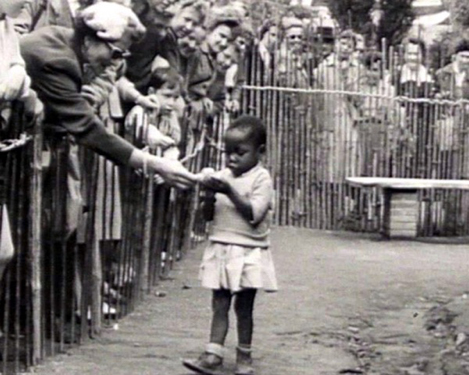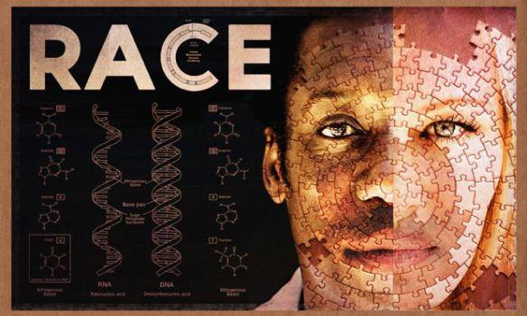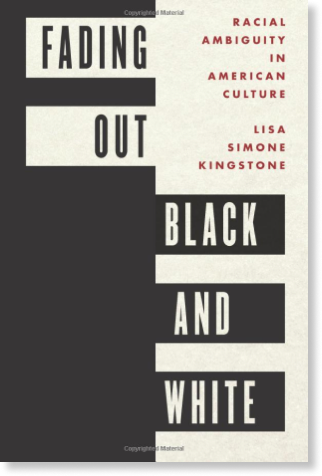What happens to a country that was built on race when the boundaries of black and white have started to fade? Not only is the literal face of America changing where white will no longer be the majority, but the belief in the firmness of these categories and the boundaries that have been drawn is also disintegrating.

GIRL BEING FED IN A
HUMAN ZOO 1950’S
Book Reviews
Mapping and re-mapping the cultural geography of race and identity are some of the critical, yet most complex endeavors of our time. Lisa Kingstone gives us the tools to navigate this thorny area across both recent history and contemporary culture. It is a forensically crafted masterclass of clarity – essential reading for anyone who is as confused as I am.
Beautifully written, compellingly argued, and exceptionally well-structured. Lisa Kingstone frames her richly illuminating, vital and groundbreaking questions in wonderfully theoretically incisive ways by asking, “what do our reactions and changing representations of black and white say about either our shifting perceptions or the firmness of racial categories?”
Lisa Kingstone’s book challenges people on both sides who are entrenched and invested in the traditional binary of race. She unpacks the concept and explores the exemplars of the moment – Rachel Dolezal and President Obama – and ongoing cultural targets of analysis like children’s dolls and popular media. In her original research using focus groups, she helps us see cracks in the system and how far we have to go if we have any hope to unleash human richness, complexity, and ambiguity beyond binary.
Cultural narratives around the black/white binary in America are changing. Lisa Kingstone takes different kinds of representation, including the response to Rachel Dolezal’s racial construction, to explore the tensions between persistent essentialism and notions of emerging racial fluidity. To this complex territory, she brings analytical acuity and insight in this highly readable and beautifully written book. It will be widely read.

AVAILABLE NOW
FADING OUT BLACK
AND WHITE
This insightful, provocative glimpse at identity formation in the US reviews the new frontier of race and looks back at the archaism of the one-drop rule that is unique to America.




